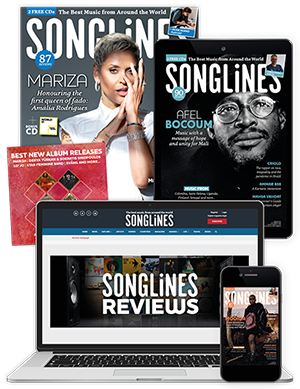Monday, August 12, 2024
Dispatch from: Naples, Italy
By Ciro De Rosa
Ciro De Rosa drops by Auditorium Novecento in the heart of the old city, where Neapolitan popular music’s legacy continues to resonate

Maria Mazzotta (photo: Pietro Previti)

Register now to continue reading

Thanks for visiting the Songlines website, your guide to an extraordinary world of music and culture. Sign up for a free account now to enjoy:
- Free access to 2 subscriber-only articles and album reviews every month
- Unlimited access to our news and awards pages
- Our regular email newsletters

